Many people know that clay is a universal material in construction. In this case, it has been used for many centuries, but every year its scope is significantly narrowed. The thing is that gradually clay is displacing more modern materials that have better properties. Despite this, in some cases, clay remains an indispensable resource.
First of all, it is worth saying that clay is a good material for the thermal insulation of the premises. It is for this that it is used in modern construction. Most often, of course, clay is activated when the insulation of small buildings, where it is enough to have small amounts of insulating material.
The most interesting thing is that clay capabilities often exceed the possibility of some modern insulating materials. This does not hide specialists in many building stores.
This material is devoted to the use of clay for housing insulation. In this article we will look at the main features of clay, as well as some subtleties of the process of insulation of the house with this material.
Thermal insulation properties of clay
As you know, many years ago clay was used as the main building material for the construction of walls and overlaps. The main feature of this material is solidification under certain conditions. Accordingly, with water, you can twist clay, use for construction work, and then the material will quickly become practically monolithic.
In modern conditions, ceilings are insulated with clay. Of course, natural material is also activated for insulation of walls, as well as other objects, but optimal efficiency is achieved only if we warm the ceiling. Moreover, it is not a secret that together with clay it is advisable to use and sawdust. They are added directly to clay, so that the mixture gets good thermal insulation characteristics.
Do not think that sawdust in this matter practically does not matter. Everything is quite the opposite. Therefore, if there is a need for a clay ceiling insulation, it will have to search and sawdust. Fortunately, they can be completely free to get on many woodworking enterprises. Moreover, the process of insulation will need quite a bit sawdust.
To prepare an optimal clay-based solution, we will also need a lot of water and tanks. Accordingly, this process has a lot of difficulties, so it is better to carry out insulation with partners.
Advantages of Hill Hill Warming
Obviously, the insulation of the house of clay has a lot of positive parties to know. And the following advantages:
- Cheapness. This material is significantly cheaper than analogs that are currently available on the market. Thus, if there are some problems with the process of insulation of clay, you can safely abandon this idea. Like claine, sawdust can be obtained by making a minimum effort. The main concerns are in the arrangement of the insulation, and they need to remember.
- Small weight. Again, in contrast to analogs, clay has a sufficiently modest weight. This, in turn, has a positive effect on the process of insulation. Quite often, the insulation is distinguished by a large weight, and this can negatively affect the overlap state. Accordingly, there should be no such problems with clay, but on any case it is still necessary to carry out some tests that will allow to establish the strength of the overlap.
- Fire safety. There is no doubt that clay is a material that definitely won't cause a fire as well as its distribution. In the event that it is necessary to choose a safe insulation, then clay is the perfect option. It is not worth paying attention to the presence of sawdust in this insulation, since they certainly do not bear any danger.
Well, again I would like to repeat that the process of arranging insulation based on clay is quite simple. In this case, we do not need to have any original devices and especially experts who are engaged in such events. Everyone can do own. Of course, the assistant does not hurt in this matter.
Disadvantages of insulation with clay
It must be recognized that clay is far from the most efficient and modern material designed for insulation. Accordingly, many modern insulation, manufactured for industrial and residential buildings, insulate the room a little better. However, as it is known, clay is several times cheaper than most of the analogues on the market.
In addition, as already mentioned, with the help of clay, experts advise only ceilings or overlaps. In other cases (insulation of walls, gender), the natural material looks like the most real outsider. In some cases, clay can act as an additional means of insulation.
Well, the disadvantages would also like to be attributed to the fact that the insulation created can easily become unsuitable for use. Therefore, in this case, it is necessary to take into account the proportions, without which the material is either started to crumble after the arrangement on the surface, or simply will not give any effect.
Tools, devices and other components of the process
In this process, not so little tools will be required. Often the list consists of the following components:
- concrete mixer;
- barrel;
- sawdust;
- clay;
- water;
- capacity;
- pergamine;
- putty knife;
- cardboard;
- boards;
- construction stapler;
- hammer;
- nails.
It should be borne in mind that for the arrangement of clay-based insulation, we will need to create a small design, which will consist of boards, cardboard and other components.
Preparation of insulating clay based
This process is the most responsible. As we mentioned earlier, any violations of proportions may be a serious problem.
- First of all, we will need an iron bar in which our future insulation will be kneaded. This container needs to be placed some volume of clay. In a specific case, we will use about 5 buckets of natural material.
- From above, clay is poured with a small amount of water. After that, you need to leave a lot for some time to turn.
- Immediately it is necessary to stir the mixture. It is done until the moment of consistency will not be as sour cream.
- Next we need a concrete mixer. Approximately half of the mixture obtained earlier, we are there and put. Together with this in the concrete mixer you need to place and sawdust. As for proportions, here on 1 clay bucket accounts for 2/3 buckets of dense sawdust. In this case, the proportions can change a little. Ultimately, we must get a dense mixture. Accordingly, if something is very liquid, it should be safely adding more clay.
Preparation of the surface for clay insulation
Do not be an important stage - preparation of the surface. Here we will need to do everything possible so that the resulting mass is most best on the surface and demonstrated excellent efficiency (creation of formwork). Most often we have the wood basis on which all events will occur. Accordingly, we need to put the waterproofing material on this surface, which will save the ceiling from the penetration of water and moisture. On sale you can find many materials of this kind. The most important thing is to correctly place waterproofing, even after some time there was no trouble.
If the surface on which the arrangement of the insulation is planned, fully even, should be thought about creating small lags. These wood elements have a certain step among themselves, and filling such "sectors" the resulting mass will be the most correct solution.
For additional heat insulation, the cardboard layer is often involved in the film. But in this case, we increasingly worsen the situation associated with fire safety, since this material can ignite. As you know, the ceiling should be the highest security, especially if we are talking about the threat of a fire.
The process of insulation of the ceiling clay
It is worth noting in advance that the insulation of clay is a fairly serious process, which needs to be thoroughly analyzed. Most often we are talking about the fact that the clay mass is dry enough, so such events make sense to spend in summer. Accordingly, the mass will become monolithic to winter and will delight good efficiency. With increased humidity, the clay will remain in the initial state, and about some thermal insulation characteristics can be forgotten.
Separately I would like to say about fire safety. Before building process, it is necessary to take into account all the details that could affect the above aspect. Most often, problems arise after the owners insulate the clay ceiling over electrical wiring. This can not be allowed, especially since it will have to carry out insulation first, and this is a considerable amount of work. Accordingly, if we are dealing with wiring, you can use the tubes through which it should go.
The main process of insulation includes the following steps:
- First of all, Parchment is located on the prepared surface. This material often has a small thickness, so attached to wood surface with a stapler. If we have a concrete base, then a wide scotch will completely come down. The most important thing is to ensure a good density of the layer of material. As already mentioned, a cardboard can be placed under this layer, which will improve thermal insulation properties.
- Next comes the time of using our clay mass. It should be borne in mind that the clay will dry long enough, after the cooked mixture you can use it the next day, and even through a longer period of time. We take the barrel in which clay is located, and fill the voids on the surface. As mentioned earlier, a peculiar formwork must be present, which will be an excellent form for clay. The thickness of the ideal layer should be about 30 cm. Of course, many people might think that everything solves the thickness of the layer. However, it should be borne in mind that too large clay weight can also negatively affect the overall situation associated with the exploitation of the dwelling. Clay is a heavy resource that can and damage its large overlap. In any case, make a layer of material more than 30 cm - it simply makes no sense. If the clay is too small, then no effectiveness will give such insulation.
- In the event that cracks appear on the surface, it is necessary to start acting immediately so that the problem does not gain a huge scale. To solve, you need to arm yourself with raw clay and try to make the cracks.
- Approximately 2 weeks need to wait so that the clay is dried. After that, you can safely carry out all other construction events. At this stage, the created formwork (if necessary) is disassembled, after which it is possible on the basis of the clay layer to create a wooden floor. Obviously, there is no need for this, especially since free access to the insulation allows you to quickly get rid of all possible problems. But if this surface is necessary for the movement of people, then it is still worth thinking about the creation of the floor.
To date, many builders significantly simplify this process. The thing is that the above formwork has many problem areas. For example, after a long period of operation, remove the clay will be very difficult. Accordingly, such works take a lot of strength. To avoid this, you can simply create small wood forms. They can be placed on the surface and fill clay with sawdust. Next, when you need to spend some action with the surface, it is enough just to extract the form, each of which has a very small weight.

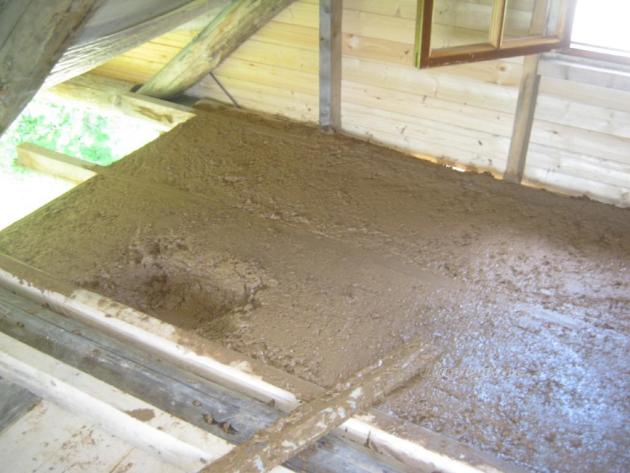
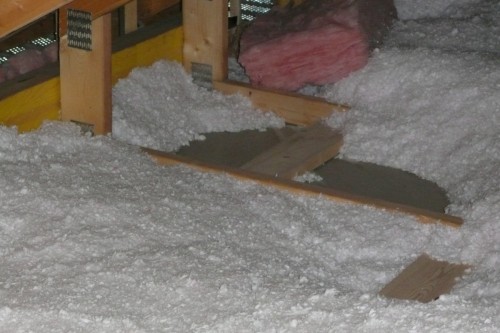
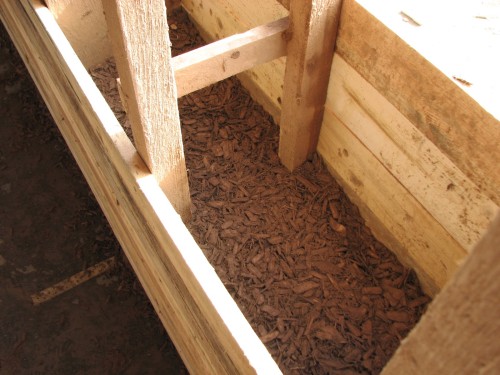
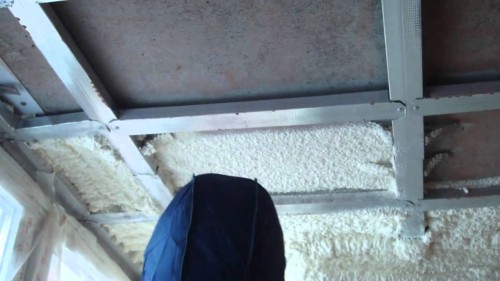
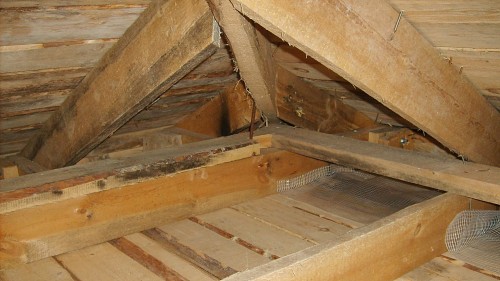

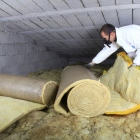
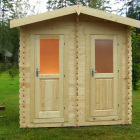



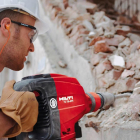
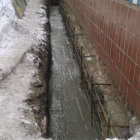
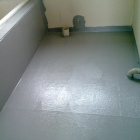
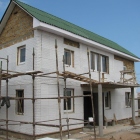
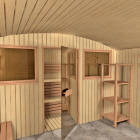

 Start a discussion ...
Start a discussion ...